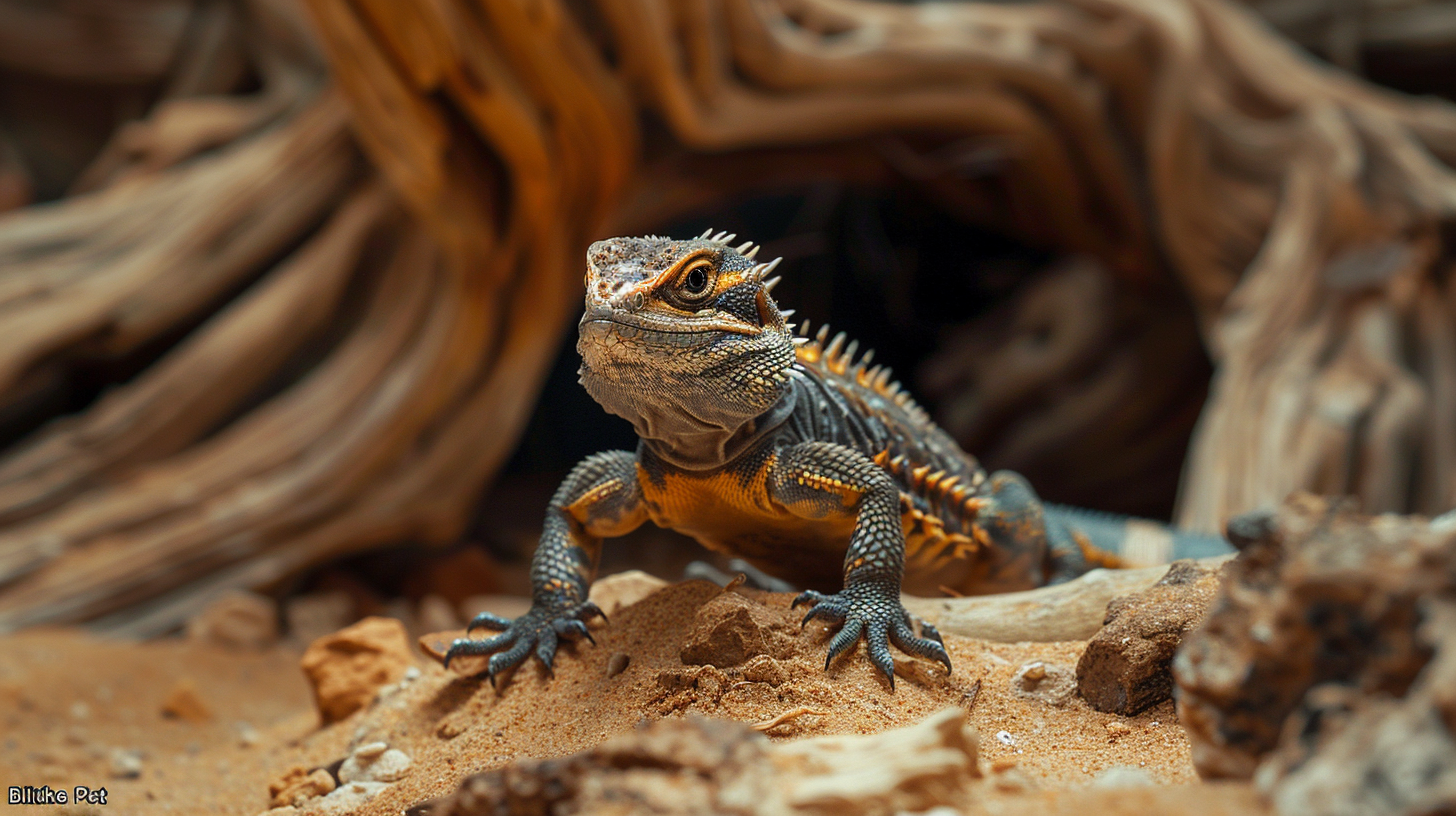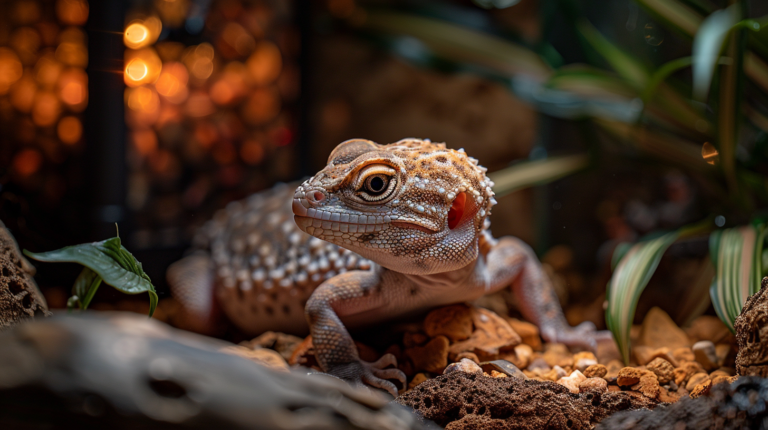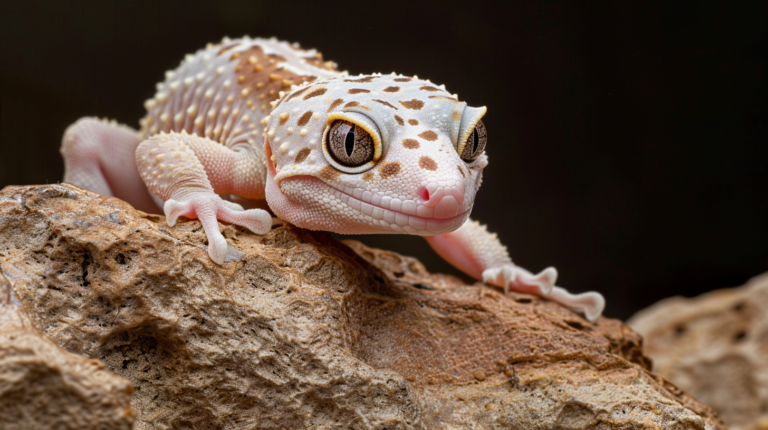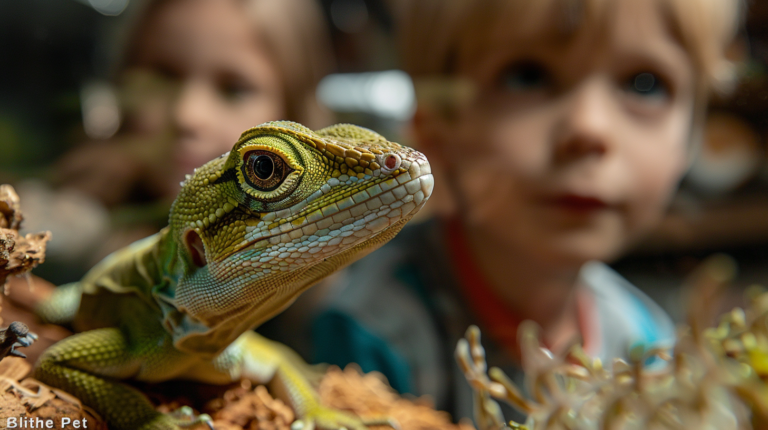Discover essential Uromastyx reptile care facts! Learn about these amazing spiny-tailed lizards, their habitat needs, diet, and expert care tips for healthy pets.
Table of Contents
Did you know that the Uromastyx reptile can live up to 30 years in captivity and survive without drinking water for months? These remarkable spiny-tailed lizards are among the most fascinating reptilian companions, yet many pet owners remain unaware of their incredible adaptations and specific care requirements.
The Uromastyx reptile, commonly known as the spiny-tailed lizard, represents one of nature’s most resilient desert dwellers. Native to Africa, the Middle East, and parts of Asia, these prehistoric-looking creatures have captivated reptile enthusiasts worldwide with their docile temperament and stunning coloration. Whether you’re considering adding a Uromastyx reptile to your family or you’re already caring for one, understanding these eight amazing facts will transform how you appreciate and care for these extraordinary animals.
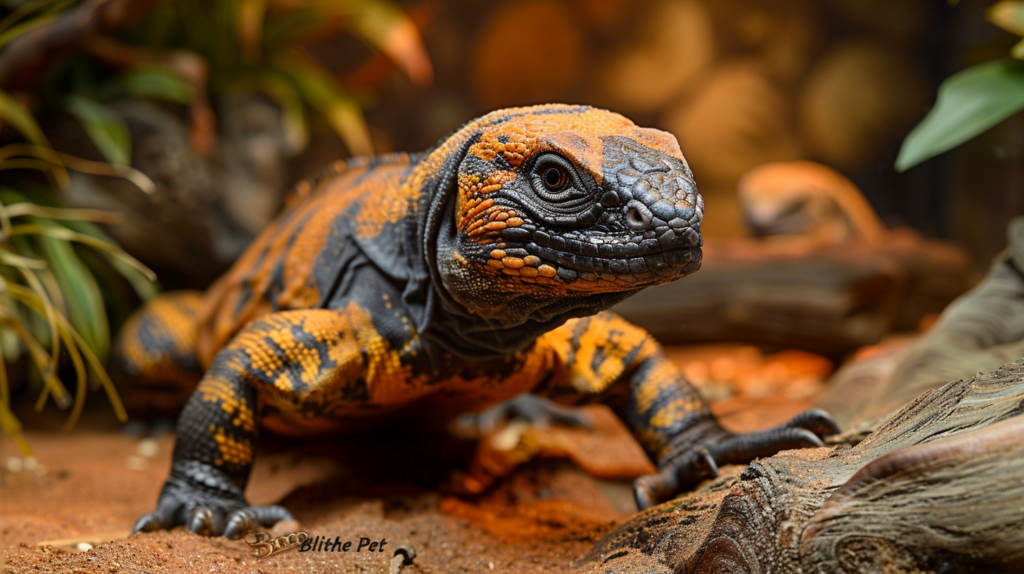
When I first encountered a Uromastyx reptile at a reptile expo in Arizona three years ago, I was immediately struck by its calm demeanor and vibrant orange and yellow patterns. The breeder explained how these desert specialists had evolved remarkable survival mechanisms that make them both fascinating pets and challenging creatures to care for properly.
1. Uromastyx Reptiles Are Master Water Conservators
The Uromastyx reptile possesses one of the most sophisticated water conservation systems in the animal kingdom. These desert specialists have evolved to extract moisture from their food and reabsorb water from their urine before excretion. Their kidneys can concentrate urine to such an extent that they rarely need to drink water directly.
Physiological Adaptations for Desert Life
Their specialized nasal glands filter salt from their bloodstream, allowing them to maintain proper electrolyte balance even in extremely arid conditions. This adaptation enables wild Uromastyx reptiles to thrive in environments where temperatures exceed 120°F (49°C) and rainfall occurs only a few times per year.
In captivity, many new owners make the mistake of providing water dishes, which can actually increase humidity levels and create respiratory problems. Instead, these reptiles obtain all necessary hydration from fresh vegetables and occasional misting of their habitat.
Table 1 – Markdown Version:
| Water Source | Percentage of Hydration | Frequency | Notes |
|---|---|---|---|
| Fresh Vegetables | 85% | Daily | Primary source – leafy greens, squash |
| Metabolic Water | 10% | Continuous | From protein breakdown |
| Environmental Humidity | 3% | Occasional | Morning dew absorption |
| Direct Drinking | 2% | Rare | Only during illness or stress |
2. They’re Herbivorous Adults with Omnivorous Youth
Unlike many reptile species that maintain consistent dietary habits throughout their lives, the Uromastyx reptile undergoes a dramatic dietary transformation as it matures. Juvenile Uromastyx reptiles require a mixed diet of approximately 60% vegetation and 40% insects to support their rapid growth and development.
The Dietary Transition Timeline
As these remarkable creatures reach sexual maturity around 18-24 months, their digestive systems evolve to become exclusively herbivorous. Adult Uromastyx reptiles possess specialized gut bacteria that allows them to break down cellulose and extract maximum nutrition from plant matter.
This dietary shift often confuses new owners who continue feeding insects to adult specimens, leading to obesity, kidney problems, and shortened lifespans. The transition period typically occurs gradually over 2-3 months, during which owners should slowly reduce insect offerings while increasing vegetable variety.
Key dietary considerations for adult Uromastyx reptiles:
- Dark leafy greens should comprise 60% of the diet
- Colorful vegetables provide essential vitamins and minerals
- Seeds and flowers offer enrichment and natural foraging behavior
- Avoid high-oxalate foods like spinach and chard
- Rotate food sources to prevent nutritional deficiencies
What vegetables should you feed your adult Uromastyx reptile daily? The answer lies in understanding their natural foraging patterns and nutritional requirements in the wild.
3. Uromastyx Reptiles Are Solar-Powered Thermostat Masters
Perhaps the most fascinating aspect of Uromastyx reptile biology is their sophisticated thermoregulation system. These creatures are essentially living solar panels, capable of adjusting their body positioning and skin pigmentation to optimize heat absorption and retention throughout the day.
Advanced Thermoregulation Behaviors
Morning hours find Uromastyx reptiles positioning themselves perpendicular to the sun’s rays, maximizing surface area exposure to quickly elevate their core body temperature from the cool overnight period. As temperatures rise, they rotate their bodies to present the smallest possible profile to the heat source.
Their ability to change skin coloration from light yellow to deep black allows them to fine-tune heat absorption. Dark coloration during cool mornings accelerates warming, while lighter colors during peak heat hours prevent overheating.
In captivity, providing proper thermal gradients is crucial for Uromastyx reptile health. Basking spots should reach 110-120°F (43-49°C), while cool areas maintain temperatures around 80-85°F (27-29°C). Nighttime temperatures can safely drop to 70-75°F (21-24°C).
For more expert pet care tips and product recommendations, visit BlithePet.com — your trusted source for pet wellness.
Essential Temperature Monitoring Equipment
Digital thermometers with probe sensors provide accurate readings at multiple habitat zones. Infrared temperature guns allow quick spot-checking of basking surfaces and hide temperatures. Thermal gradients should be verified daily, as Uromastyx reptiles rely entirely on external heat sources for proper digestion and immune function.
4. Their Spiny Tails Are Multi-Purpose Defense Weapons
The iconic spiny tail that gives these lizards their common name serves multiple critical survival functions beyond simple intimidation. The Uromastyx reptile’s tail contains sharp, keratinized scales arranged in whorl patterns that create an effective defensive weapon against predators.
Defensive Strategies and Tail Functions
When threatened, a Uromastyx reptile will wedge itself into rock crevices and use its spiny tail to block the entrance. The tail’s muscular structure allows for powerful thrashing motions that can inflict serious injury on attacking predators. Additionally, the tail stores fat reserves that sustain the animal during periods of food scarcity.
Tail health indicators to monitor:
- Smooth, complete scale patterns without gaps or missing spines
- Firm, rounded appearance indicating adequate fat storage
- No swelling, discoloration, or stuck shed skin
- Active movement and normal defensive responses
- Proper tail positioning during basking and hiding
Tail injuries in captivity often result from improper habitat design, aggressive tank mates, or handling accidents. Never grab a Uromastyx reptile by the tail, as this can cause permanent damage to their vertebrae and defensive capabilities.
5. Uromastyx Reptiles Are Ancient Survivors with Modern Appeal
The Uromastyx genus has remained virtually unchanged for over 30 million years, making these reptiles living fossils that share our planet with remarkable evolutionary stability. Fossil evidence suggests that Uromastyx reptiles survived multiple extinction events that eliminated countless other species.
Evolutionary Adaptations and Genetic Diversity
Currently, 18 recognized species of Uromastyx reptiles inhabit diverse desert environments across three continents. Each species has developed subtle variations in size, coloration, and behavior while maintaining the core physiological adaptations that make them supremely suited for arid environments.
The most commonly kept species in captivity include the Mali Uromastyx (U. maliensis), Egyptian Uromastyx (U. aegyptia), and Ornate Uromastyx (U. ornata). Each species exhibits distinct care requirements and temperament characteristics that prospective owners should carefully research.
Table 2 – Markdown Version:
| Species | Adult Size | Lifespan | Temperature Range | Difficulty Level |
|---|---|---|---|---|
| Mali Uromastyx | 12-16 inches | 15-20 years | 110-120°F basking | Beginner |
| Egyptian Uromastyx | 24-30 inches | 20-30 years | 115-125°F basking | Intermediate |
| Ornate Uromastyx | 10-14 inches | 12-18 years | 105-115°F basking | Beginner |
| Moroccan Uromastyx | 14-18 inches | 18-25 years | 110-120°F basking | Intermediate |
6. They Practice True Hibernation Unlike Most Reptiles
Most reptiles experience brumation, a period of reduced activity and metabolism during cooler months. However, the Uromastyx reptile undergoes true hibernation, completely shutting down biological processes for extended periods lasting 2-4 months annually.
Understanding Hibernation Cycles in Captivity
During hibernation, Uromastyx reptiles retreat to underground burrows or secure hiding spots where they remain motionless for weeks at a time. Their heart rate drops to barely detectable levels, and they cease all feeding and elimination activities.
Captive Uromastyx reptiles should be allowed to experience this natural hibernation cycle for optimal health and longevity. Attempting to prevent hibernation through constant heating and lighting can lead to chronic stress, weakened immune systems, and shortened lifespans.
Pre-hibernation preparation checklist:
- Gradually reduce daylight hours over 2-3 weeks
- Lower ambient temperatures to 65-70°F (18-21°C)
- Ensure the reptile has emptied its digestive system
- Provide secure hiding areas with proper ventilation
- Monitor weekly for signs of illness or dehydration
- Maintain minimal lighting for essential biological rhythms
How do you know when your Uromastyx reptile is ready to emerge from hibernation? The answer involves recognizing subtle behavioral changes and environmental cues.
7. Uromastyx Reptiles Are Surprisingly Social and Intelligent
Contrary to the solitary reputation of most desert reptiles, Uromastyx reptiles display complex social behaviors and remarkable problem-solving abilities. In the wild, they form loose colonies around favorable basking sites and feeding areas, establishing territorial hierarchies through visual displays rather than physical confrontation.
Cognitive Abilities and Learning Behaviors
Recent studies have documented Uromastyx reptiles learning to navigate mazes, recognize individual human caretakers, and modify their behavior based on environmental changes. They demonstrate clear preferences for certain foods, basking locations, and social interactions.
Captive specimens often develop strong bonds with their owners, approaching the front of their enclosures during feeding times and displaying calm behavior during handling sessions. Some individuals learn to associate specific sounds or movements with positive experiences like feeding or basking light activation.
Enrichment activities for mental stimulation:
- Rotating food placement to encourage natural foraging behaviors
- Providing varied substrate textures and hiding opportunities
- Introducing safe climbing structures and territorial markers
- Offering seasonal food varieties to maintain interest
- Creating temperature and lighting gradients for choice-based thermoregulation
8. They’re Master Architects of Underground Cities
Wild Uromastyx reptiles are exceptional engineers, creating elaborate burrow systems that can extend 6-10 feet underground and include multiple chambers for different purposes. These underground complexes feature separate areas for sleeping, food storage, temperature regulation, and emergency escape routes.
Burrow Construction and Habitat Requirements
The main tunnel typically descends at a 45-degree angle to prevent flooding during rare desert rains. Side chambers branch off at strategic intervals, each serving specific functions within the reptile’s daily routine. Temperature remains remarkably stable throughout these burrow systems, rarely fluctuating more than 5-10 degrees despite extreme surface conditions.
Captive Uromastyx reptiles retain these digging instincts and require substrate depths of at least 6-8 inches to express natural burrowing behaviors. Appropriate substrates include sand-soil mixtures, excavator clay, or specialized reptile bedding that maintains burrow structure.
Essential habitat design elements:
- Deep substrate layers for natural digging behavior
- Multiple hide boxes at different temperature zones
- Secure lid systems to prevent escape during active periods
- Adequate ventilation to prevent humidity buildup
- UV lighting systems that penetrate hide areas
- Easy cleaning access without disrupting established territories
Table 3 – Markdown Version:
| Habitat Component | Minimum Requirement | Optimal Setup | Function |
|---|---|---|---|
| Enclosure Size | 40 gallons (adult) | 75+ gallons | Territory establishment |
| Substrate Depth | 6 inches | 8-12 inches | Natural burrowing |
| Basking Area | 2 sq ft | 4+ sq ft | Thermoregulation |
| Hide Boxes | 2 (hot/cool) | 3-4 zones | Security and temperature choice |
| UV Coverage | 50% enclosure | 75% enclosure | Vitamin D synthesis |
Expert Tips for Successful Uromastyx Reptile Care
Successfully caring for a Uromastyx reptile requires understanding their unique physiological and behavioral needs. These ten expert tips will help ensure your spiny-tailed companion thrives in captivity:
- Establish proper thermal gradients from day one – Temperature consistency is crucial for digestive health and immune function
- Invest in high-quality UVB lighting – Replace bulbs every 6-8 months regardless of apparent functionality
- Rotate vegetable offerings weekly – Variety prevents nutritional deficiencies and maintains feeding interest
- Monitor weight regularly – Monthly weigh-ins help detect health issues before they become serious
- Respect hibernation cycles – Allow natural seasonal behavior changes for optimal long-term health
- Provide deep substrate – Burrowing behavior is essential for psychological well-being
- Maintain low humidity levels – Excess moisture causes respiratory infections in desert species
- Handle minimally during initial acclimation – New arrivals need 2-3 weeks to adjust to captive conditions
- Clean enclosures thoroughly but infrequently – Monthly deep cleaning maintains hygiene without excessive stress
- Establish consistent daily routines – Predictable lighting and feeding schedules reduce stress hormones
Warning Signs: When Your Uromastyx Reptile Needs Veterinary Attention
Recognizing early indicators of illness in Uromastyx reptiles can prevent minor issues from becoming life-threatening emergencies. These desert specialists hide signs of weakness as a survival instinct, making careful observation crucial for responsible ownership.
Immediate veterinary consultation required:
- Refusal to eat for more than 7 days outside hibernation periods
- Labored breathing or open-mouth breathing at normal temperatures
- Swollen limbs, joints, or facial features
- Discharge from eyes, nose, or mouth
- Lethargy during normal active periods
- Abnormal skin coloration or texture changes
- Inability to defecate or urinate normally
Respiratory infections represent the most common health threat for captive Uromastyx reptiles, typically resulting from excessive humidity or temperature fluctuations. Early symptoms include increased basking time, reduced appetite, and subtle changes in breathing patterns.
Metabolic bone disease develops gradually in reptiles receiving inadequate UVB exposure or imbalanced calcium-phosphorus ratios. Watch for tremors, difficulty climbing, or soft, flexible tail segments that indicate skeletal weakening.
Common Mistakes to Avoid with Uromastyx Reptile Care
New owners frequently make well-intentioned errors that compromise their Uromastyx reptile’s health and longevity. Understanding these common pitfalls helps prevent costly veterinary bills and ensures optimal care from the beginning.
Husbandry mistakes that threaten health:
- Providing water dishes that increase humidity levels
- Using incorrect substrate types that prevent natural digging behavior
- Insufficient enclosure sizes that limit territorial establishment
- Feeding juvenile diets to adult specimens
- Attempting to prevent natural hibernation cycles
- Inadequate temperature differentials between basking and cool areas
- Over-handling during stress-sensitive periods
The myth that all reptiles require constant warmth leads many owners to maintain excessive nighttime temperatures. Uromastyx reptiles need temperature drops to 70-75°F during nighttime hours to maintain natural circadian rhythms and metabolic health.
Another widespread misconception suggests that larger enclosures stress reptiles. In reality, Uromastyx reptiles establish territories in the wild spanning several acres and benefit significantly from spacious captive environments that allow natural behavior expression.
Step-by-Step Uromastyx Reptile Habitat Setup Guide
Creating an optimal environment for your Uromastyx reptile requires careful planning and attention to species-specific requirements. Follow this comprehensive setup guide to establish a thriving captive habitat:
Phase 1: Enclosure Selection and Preparation (Week 1)
- Choose a 75-gallon or larger terrarium with adequate ventilation
- Install ceramic heat emitters and UVB lighting fixtures
- Test all electrical connections and timer systems
- Calibrate thermometers and humidity gauges
Phase 2: Substrate and Landscaping (Week 2)
- Add 8-10 inches of appropriate digging substrate
- Install rock formations and basking platforms
- Create multiple hiding areas at different temperature zones
- Establish visual barriers to reduce stress
Phase 3: Environmental Testing (Week 3)
- Monitor temperature gradients for 7 consecutive days
- Adjust lighting schedules to match seasonal patterns
- Test hiding area temperatures and humidity levels
- Fine-tune basking spot positioning and height
Phase 4: Final Preparations and Introduction (Week 4)
- Stock appropriate vegetables and feeding supplies
- Prepare quarantine protocols for new arrivals
- Schedule initial veterinary health examination
- Document baseline environmental parameters
This methodical approach ensures your Uromastyx reptile enters a stable, properly functioning habitat that supports their complex physiological needs from day one.
Debunking Uromastyx Reptile Myths
Misinformation about Uromastyx reptile care persists throughout online forums and pet store advice, potentially endangering these remarkable creatures. Let’s examine and correct three persistent myths with scientific facts:
Myth 1: Uromastyx reptiles are aggressive and difficult to handle Reality: These desert specialists are among the most docile reptile species when provided appropriate care. Defensive behaviors typically indicate inadequate environmental conditions or improper handling techniques rather than inherent aggression.
Myth 2: All desert reptiles require identical care parameters Reality: Uromastyx reptiles have evolved specific adaptations that distinguish their care requirements from other arid-climate species. Their herbivorous adult diet, true hibernation cycles, and extreme temperature preferences make them unique among desert reptiles.
Myth 3: Captive breeding is impossible without specialized facilities Reality: Responsible hobbyists successfully breed Uromastyx reptiles using proper environmental cycling, adequate nutrition, and appropriate group dynamics. However, breeding should only be attempted by experienced keepers with comprehensive species knowledge.
Understanding these factual distinctions helps potential owners make informed decisions about Uromastyx reptile ownership while dispelling harmful misconceptions that compromise animal welfare.
Building a Relationship with Your Uromastyx Reptile
Despite their primitive appearance, Uromastyx reptiles can develop meaningful relationships with attentive caretakers who respect their behavioral boundaries and natural instincts. Building trust requires patience, consistency, and understanding of their unique communication methods.
Positive interaction techniques:
- Approach slowly and avoid sudden movements during handling
- Allow voluntary approach to your hand before attempting contact
- Respect their preference for minimal handling during cool periods
- Recognize individual personality differences and behavioral preferences
- Maintain consistent feeding schedules to build predictable routines
Some Uromastyx reptiles enjoy gentle scratching along their sides or back, while others prefer minimal physical contact. Learning your individual reptile’s preferences strengthens your bond while respecting their natural behaviors.
Visual communication signals to recognize:
- Color changes indicating mood or temperature preferences
- Body positioning that demonstrates comfort or stress levels
- Eye contact patterns during feeding and handling sessions
- Tail position and movement indicating defensive readiness
- Basking behaviors that reflect environmental satisfaction
Do you notice your Uromastyx reptile changing colors when you approach their enclosure? This natural response helps them communicate their current comfort level and environmental needs.
When to Consult a Reptile Veterinarian
Establishing a relationship with an experienced reptile veterinarian before health issues arise ensures prompt, professional care when problems develop. Many small animal veterinarians lack the specialized knowledge required for proper Uromastyx reptile treatment.
Annual health maintenance visits should include:
- Comprehensive physical examination including oral cavity inspection
- Fecal parasite screening and treatment if necessary
- Weight monitoring and body condition assessment
- Nutritional counseling based on current diet and husbandry
- Environmental parameter review and adjustment recommendations
Emergency situations requiring immediate veterinary intervention include respiratory distress, prolapsed organs, severe injuries, or prolonged refusal to eat outside normal hibernation periods. Delaying treatment for serious conditions often results in permanent complications or death.
Prepare for veterinary visits by documenting:
- Recent behavioral changes or appetite fluctuations
- Environmental temperature and humidity logs
- Current diet composition and feeding frequency
- Any visible physical abnormalities or concerning symptoms
- Previous medical history and medication responses
Experienced reptile veterinarians can provide species-specific guidance that dramatically improves your Uromastyx reptile’s health outcomes and quality of life.
Uromastyx Reptile Care – Frequently Asked Questions
Conclusion
The Uromastyx reptile represents one of nature’s most remarkable evolutionary success stories, combining prehistoric appearance with sophisticated physiological adaptations. These eight amazing facts demonstrate why these spiny-tailed lizards have captivated reptile enthusiasts worldwide while highlighting the specialized care requirements that ensure their continued success in captivity.
From their extraordinary water conservation abilities to their complex social behaviors, Uromastyx reptiles challenge common misconceptions about reptile intelligence and adaptability. Understanding their unique hibernation cycles, architectural abilities, and thermoregulation mastery transforms routine care into an appreciation for millions of years of evolutionary refinement.
Successful Uromastyx reptile ownership requires dedication to understanding their specific needs rather than applying generic reptile care protocols. The investment in proper habitat design, species-appropriate nutrition, and respectful handling techniques rewards caretakers with decades of companionship from these living fossils.
Whether you’re considering adding a Uromastyx reptile to your family or seeking to improve care for a current companion, remember that these desert specialists deserve the same level of commitment and expertise that their wild ancestors have demonstrated for over 30 million years.
Have a similar experience with your Uromastyx reptile? Share it in the comments below! Don’t forget to check out our other helpful guides at BlithePet.com.

